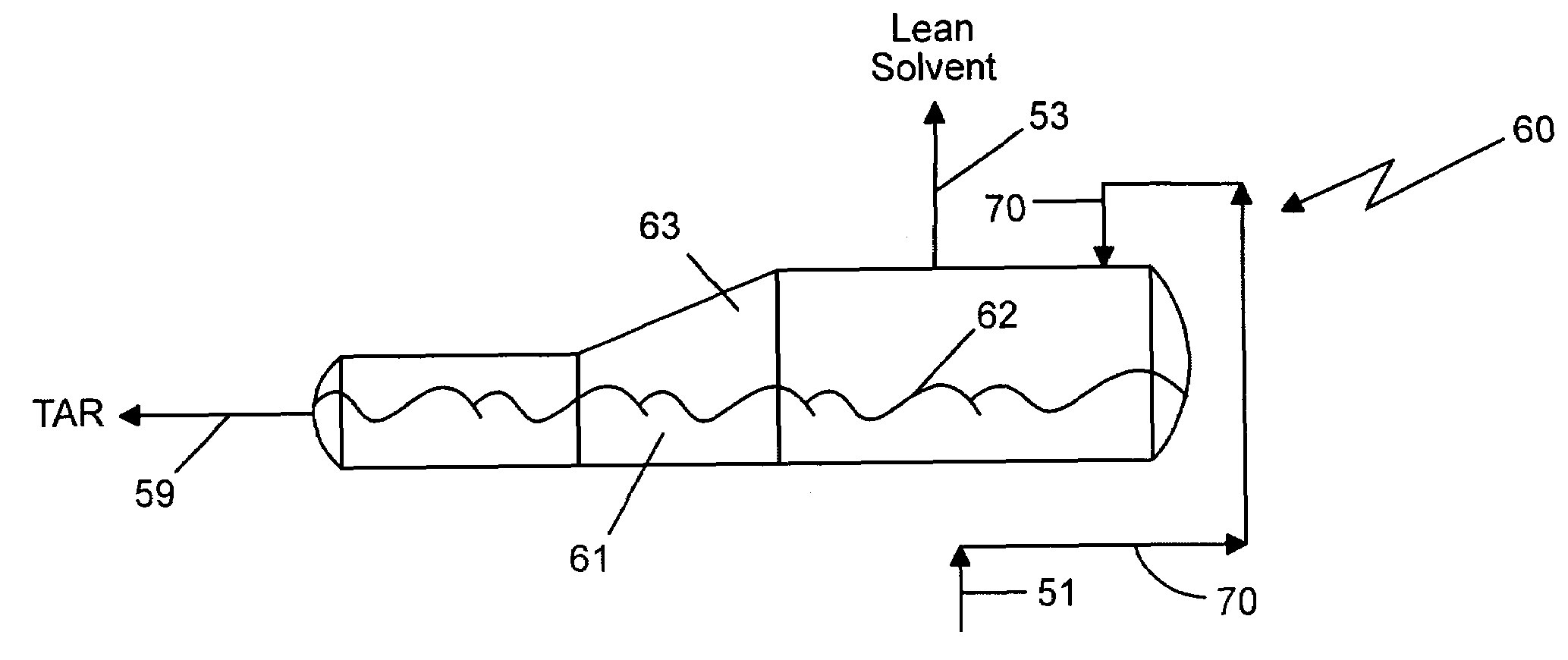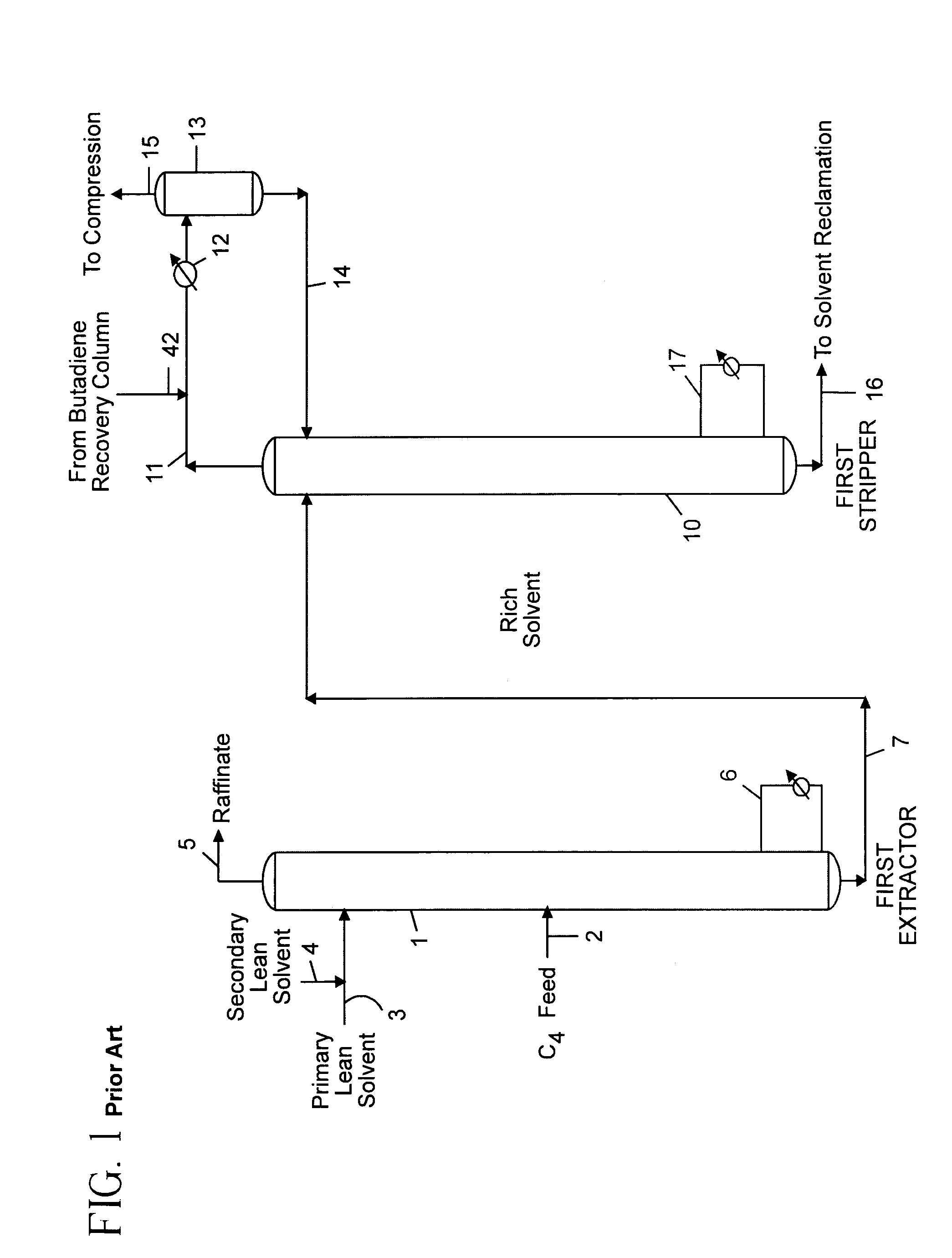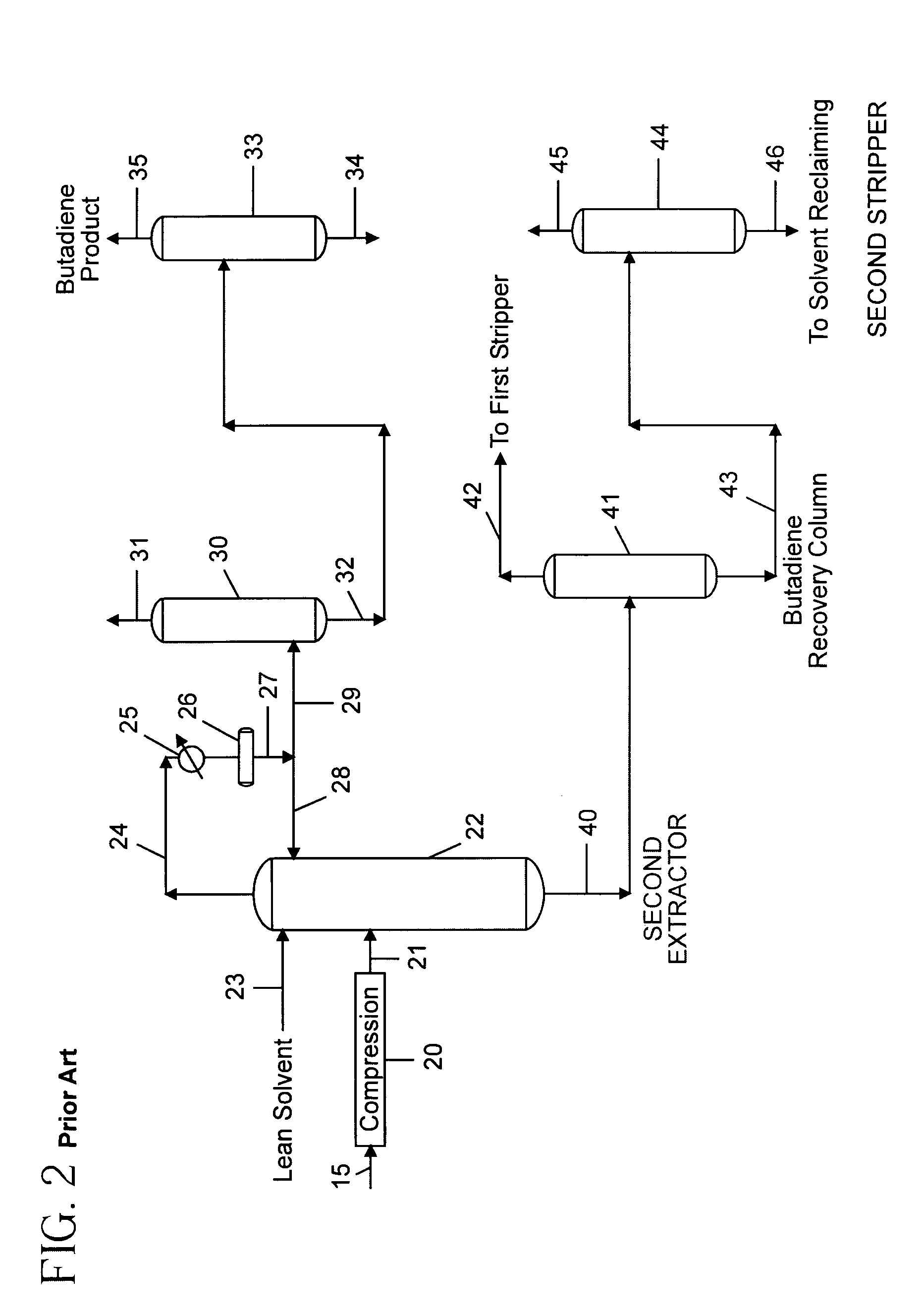Solvent extraction
a technology of solvent extraction and butadiene, which is applied in the direction of extraction purification/separation, separation process, organic chemistry, etc., can solve the problems of not achieving the control of tar formation (minimization), and achieve the effect of reducing the rate of tar formation in the system and reducing existing tar deposits
- Summary
- Abstract
- Description
- Claims
- Application Information
AI Technical Summary
Benefits of technology
Problems solved by technology
Method used
Image
Examples
example 1
[0047]An extraction unit as depicted in FIGS. 1 through 4 was operated using a crude C4 feedstock 2 for extractor 1 that contained about 6.8 wt. % n-butane, about 1.3 wt. % isobutane, about 13.5 wt. % 1-butene, about 10.3 wt. % 2-butenes (cis and trans), about 27.9 wt. % isobutylene, about 39.5 wt. % butadiene (1,2 and 1,3), about 0.5 wt. % vinyl acetylene, and about 0.1 wt. % ethyl acetylene, all wt. % being based on the total weight of the feed. Feed 2 was introduced into extractor 1 at a temperature of about 125° F. at about 65 psig, and a flow rate of about 60,000 pounds per hour (pph).
[0048]The extraction process employed dimethylformamide as the primary solvent and furfural as the secondary solvent. The total weight of the combined solvents, including a tar load of 2 wt. %, contained about 95 wt. % primary solvent and about 3 wt. % secondary solvent. The solvents were introduced into extractor 1 at a temperature of about 104° F. at about 48 psig, and a flow rate of about 415,0...
example 2
[0058]The operation of Example 1 was repeated except that the flow rate of stream 5 to reboiler 60 was increased to about 2,100 pph (a 23.5% increase), and the temperature of stream 51 reduced to about 170° F. at a pressure of minus 10 psig (4.7 psia).
[0059]After operating under these conditions for an extended time sufficient to stabilize the extraction system as a whole, the tar content of stream 51 had fallen to about 1 wt. % based on the weight of stream 51, and the secondary solvent plus tar level had fallen to less than 5 wt. % based on the weight of stream51.
[0060]Continued operation of the extraction unit as a whole at this reduced tar loading required emptying of reboiler 60 only 7 times per month in order to maintain the 1% tar loading even though the feed rate of stream 51 had been increased 23.5%.
[0061]In addition, while operating under this reduced tar level, about 25% less primary solvent was used and the extraction unit experienced a self-cleaning effect in that previ...
PUM
| Property | Measurement | Unit |
|---|---|---|
| temperature | aaaaa | aaaaa |
| temperature | aaaaa | aaaaa |
| temperature | aaaaa | aaaaa |
Abstract
Description
Claims
Application Information
 Login to View More
Login to View More - R&D
- Intellectual Property
- Life Sciences
- Materials
- Tech Scout
- Unparalleled Data Quality
- Higher Quality Content
- 60% Fewer Hallucinations
Browse by: Latest US Patents, China's latest patents, Technical Efficacy Thesaurus, Application Domain, Technology Topic, Popular Technical Reports.
© 2025 PatSnap. All rights reserved.Legal|Privacy policy|Modern Slavery Act Transparency Statement|Sitemap|About US| Contact US: help@patsnap.com



